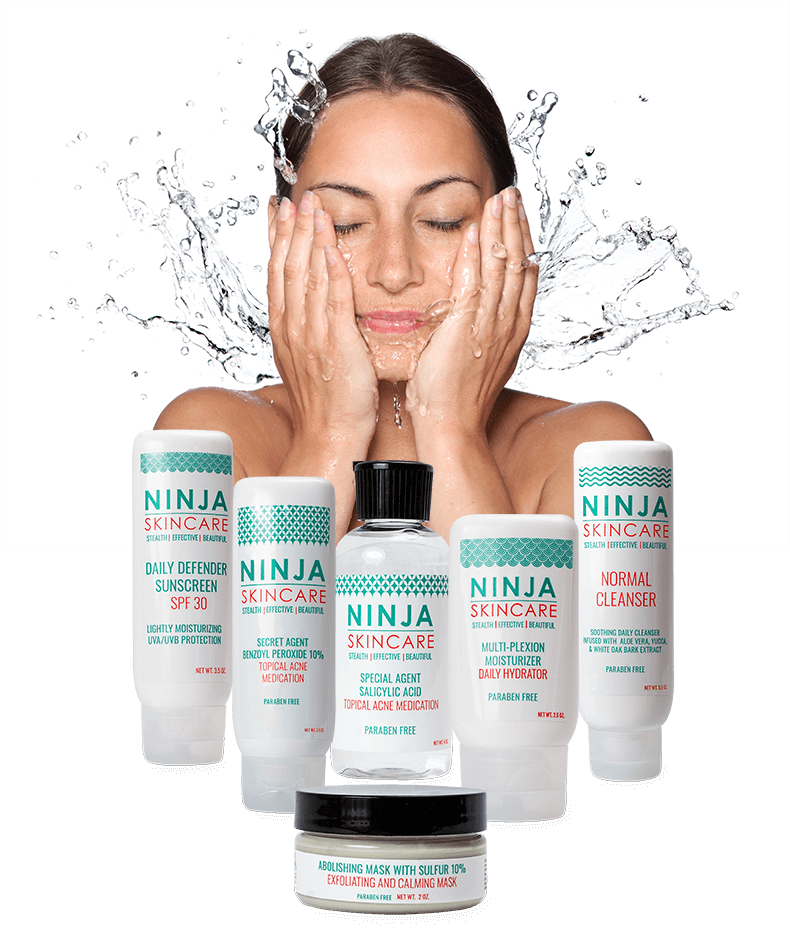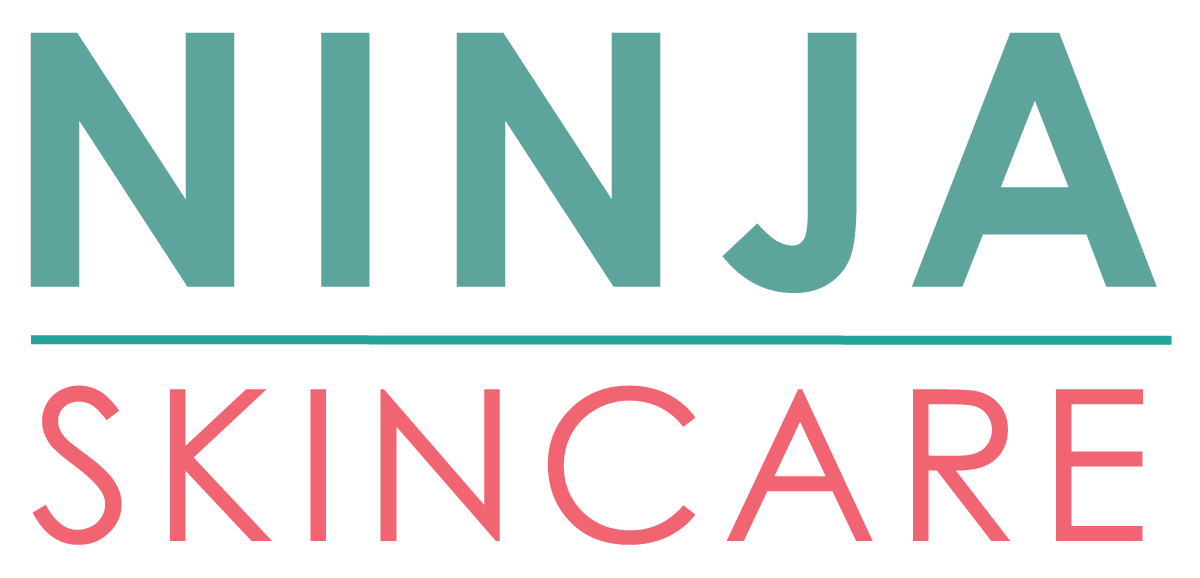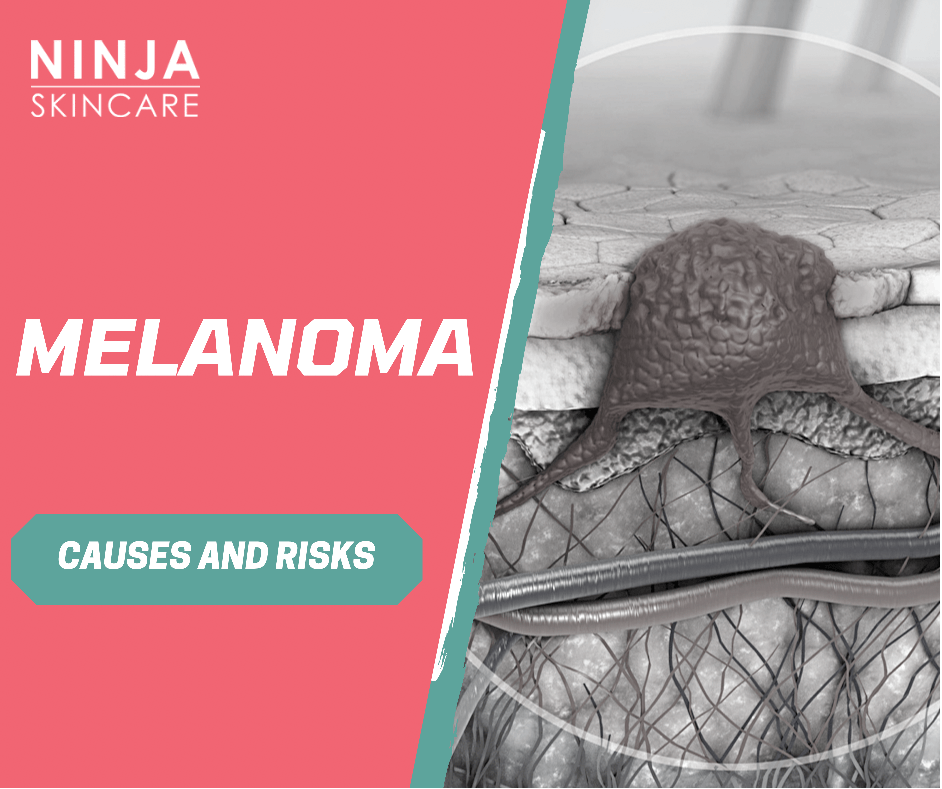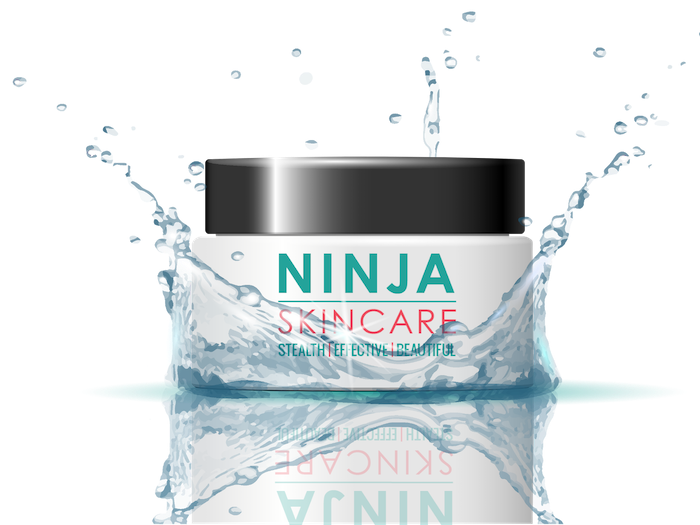Melanoma: Causes and Risks
August 27, 2021
Melanoma – Part 1
Seeing that it’s getting to be the end of summer and, as you all know, avoiding the sun is one of our favorite topics, we thought we’d dive into something related: Melanoma skin cancer. This is going to be a 2-part blog post because it’s really important to give you the full scoop.
While we primarily focus on the topical treatment of acne, we are ultimately a skin care company interested in helping people with all types of skin and skin conditions. No doubt sun exposure has adverse effects for acne-prone people by creating future breakouts and tanning dark spots darker. However, regardless of acne status, sun exposure has deeper and more serious consequences for every human on the planet.
Skin cancer – in particular Melanoma.
There are many types of skin cancer but the most serious by far is Melanoma because if left untreated or unnoticed it can be fatal. It is called Melanoma because it develops in the cells that produce melanin. Melanin is the pigment that gives your skin color.
There ARE cases where melanoma develops unrelated to sun exposure, for example a mole that you were born with can develop a melanoma. However, the primary cause of melanoma Is exposure to UV radiation from the sun.
How does a Melanoma form?
Melanin-producing cells are called melanocytes. When these skin cells are produced normally the new cells come to the surface and ‘push’ old cells to the surface to die off (side note – why exfoliating is great!). But when there is cellular, DNA-level damage to those cells caused from UV sun radiation, they don’t develop normally and grow out of control, producing a cancerous mass of cells. There are genetic reasons for this mutation but most dermatologists will agree the majority of melanoma is caused by UV damage to the skin.
Are you at risk?
Are you in the sun a lot? Then yes, you are at risk. Extremely high risk factors Include:
1/ Fair skin. When you are fair skinned, you have less melanin in your skin. This means your skin is more susceptible to UV damage. The lighter your skin, eyes and hair means you should DEFINITELY be careful when outdoors. Sunscreen but even more importantly, shade! Wear long sleeves and a wide-brimmed hat at ALL times and even on days that aren’t blistering hot.
2/ Were you a sun worshipper in your youth? Did you get sunburned? The burns and extreme exposure to UV lights (even tanning beds count!) greatly increase your chance of getting melanoma.
3/ Moles. Or beauty marks – whatever you prefer. If you are mole-y, meaning over 50 moles on your body, then you too are at a higher risk of getting melanoma. Those pigment rich tiny spheres that sprinkle your body may be abnormal, resulting in a higher chance of having melanoma than your non-mole-y friends.
4/ Family history. What this means is genetics. Ahhhh -genetics. Gotta love it. But if someone in your family has had melanoma, just like breast cancer and every other type of cancer, you need to be on the watch for it as well.
5/ Weakened immune system. This has not been as well studied as the other risks listed above BUT it has been proven for other types of cancer. So it is safe to say that if your immune system is compromised, you should be vigilant for ALL types of cancer, including melanoma. When you have a healthy immune system, it hunts for abnormal cells and destroys them before they cause damage. When you have a compromised immune system, your body is less able to defend itself this way. Therefore, it’s been medically noted by doctors there is an increased rate of cancer in immunocompromised individuals.
You’ve reached the end of Part 1. Part 2 will follow shortly: Types of Melanoma and how to prevent and detect it.



 Get a ZERO obligation consultation with an acne-fighting Ninja!
Get a ZERO obligation consultation with an acne-fighting Ninja!
